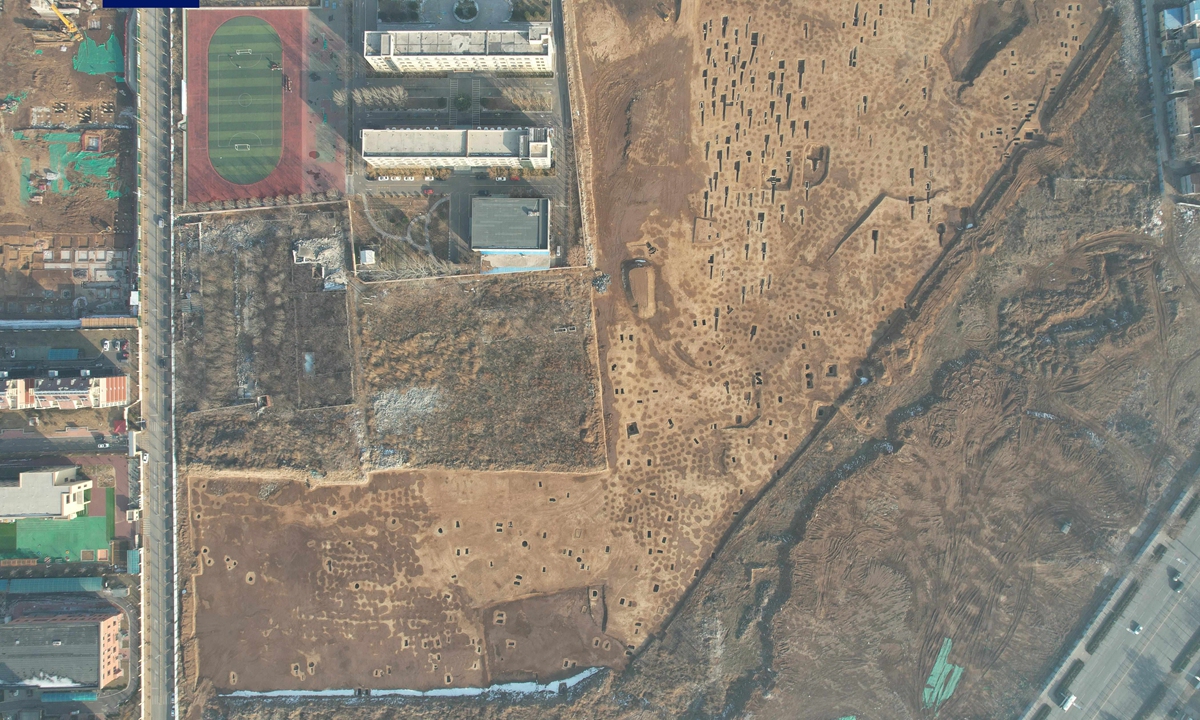
Photo: screenshot from online
A large-scale cemetery cluster that includes a total of 301 ancient tombs has recently been discovered in Jinan, East China's Shandong Province.
Located at the city's Changqing district, the unearthed tomb cluster is a rare as the 301 tombs cover different historical time periods, including the Warring States Period (475BC-221BC), the Western Han Dynasty (206BC-AD25), Wei Dynsasty (220-265) and the Jin Dynasty (265-420). The latest ones were found to belong to the Qing Dynasty (1644-1911).
Archaeologist Qu Fulin told the Global Times that such a discovery is "unique" especially due to how surprisingly the time periods of the individual tombs can be distinguished so clearly.
"It reflects the possibility that those ancient people were aware that the cemetery was inherited from previous dynasties and, for example, people who used the cemetery in the Qing Dynasty may have paid extra attention to not to destroy the tomb remains left by Yuan Dynasty (1279-1368) people," Qu told the Global Times.
Echoing Qu's opinion, archaeologists on site have found that tombs belonging to the Warring States Period to the following Wei and Jin dynasties appear to have been isolated from each other. This separation indicates that the cemetery has been continually used for hundreds of years while still maintaining the characteristics of the burial systems of each Chinese dynasty.
Xue Ruiming, an archaeologist who specializes in researching Han Dynasty tombs, told the Global Times that the newly discovered site reflects the "consistency" of China's evolving burial culture. The expert also noted that burial culture is a significant aspect that reveals the "ritual and social systems" of ancient societies.
"The consistency we find from this burial site also reflects the consistency with which Chinese social and cultural developments evolved," Xue remarked.
Aside from tombs, a total of 850 relics have been unearthed from the site as well. These relics include pottery utensils such as pottery plates, pots and the ritual ware known as ding. Along with pottery artifacts, bronze, iron and ceramic utensils like bronze mirrors and iron swords have also been discovered.
Archaeologist Wang Meng told the Global Times that these relics are representative of Chinese dynasties like the Han, Yuan and Qing dynasties. They reveal the interesting everyday lives of ancient Chinese people.
Jinan is rich with archaeological finds, especially ancient cemeteries. Several other tomb clusters such as the Qingning village cemetery and Ping'an Dian cemetery were also investigated by archaeologists in 2023.
The Qingning village cemetery is the largest tomb cluster discovered in the city, which has an abundant number of Ming Dynasty (1368-1644) relics. The Ping'an Dian site is the largest cemetery site from the late Eastern Han Dynasty to the Wei and Jin dynasties that has been discovered in Jinan.
"Such sites provide important information for the future study of the area's burial cultural. They help us to look into subjects such as the ancient cultural exchanges and exchanges between ethnic cultures," Wang told the Global Times.
URL: https://www.seeglobalnews.com/read-3050.html